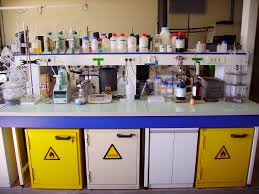In the United States, more than 500,000 people are employed in various laboratories. The OSHA standard for labs is called the Hazardous Chemicals in Laboratories Standard or 29 CFR 1910.1450. This standard only pertains to non-production laboratories. The OSHA Laboratory Standard is meant to protect workers from chemical, biological, physical, and radioactive injuries or aliments. There may be some hazards that are not covered by any listed category, OSHA still provides guidance on these matters. There is also such thing as a performance standard. This standard is in place because of the vast array of industry in the United States. There are uncountable unique processes going on all across the country, many with specific and unique hazards. There are so many different occupations that it is impossible to right a safety regulation for every single process. This is where the Performance Standard comes into play. The Performance Standard ensures that companies meet safety standards even if they are not directly listed in the OSHA rules.
Similarly to this, labs and other industries are also affected by the general OSHA clause. This says that an employer must furnish and create a safe environmental for employees to work free from apparent dangers or hazards. This standard does not only affect labs, but any businesses, corporations, or industries. In fact most OSHA standards for other industries also apply to laboratories. However when working with chemicals OSHA standards are different in the lab. Chemicals must be dealt with in “laboratories amounts”. This means using only smaller amounts of chemicals, not like a large amount used in a production processes. When dealing with a larger amount of dangerous chemicals, the danger often increases. There has been instances were the laboratory workers exceeded the amount of chemicals they are suppose to be using and it has ended in tragedy. When working with materials that may explode or combust, it is very important to not exceed the allowed amount, as this can increase the danger greatly. Chemicals can be one of the biggest dangers in a lab. It is important to know the hazards of the chemicals that are in the lab. This information should be available to workers via MSDS/SDS or a Chemical Hygiene Plan. There are a lot of lab standards that most are familiar with, and that are relatively simple as well. For example, the basic lab personal protective equipment. This includes lab coats, safety goggles, and gloves.
There are also extremely complicated aspects of lab safety. This includes the Biosafety levels one, two, three, and four. One being the least dangerous, and four being the most dangerous. In a Biosafety level four lab is were we see extremely dangerous diseases, viruses, etc. being worked with. For example, Ebola would be researched and worked with in a Biosafety level four labs, because of the immense risk to the human population it poses. In general, there are more OSHA regulations for labs than other occupational settings. This is because labs still need to abide by the regular OSHA regulation for occupational settings, but also need to follow a unique list of regulations pertaining specifically to labs.



No comments:
Post a Comment